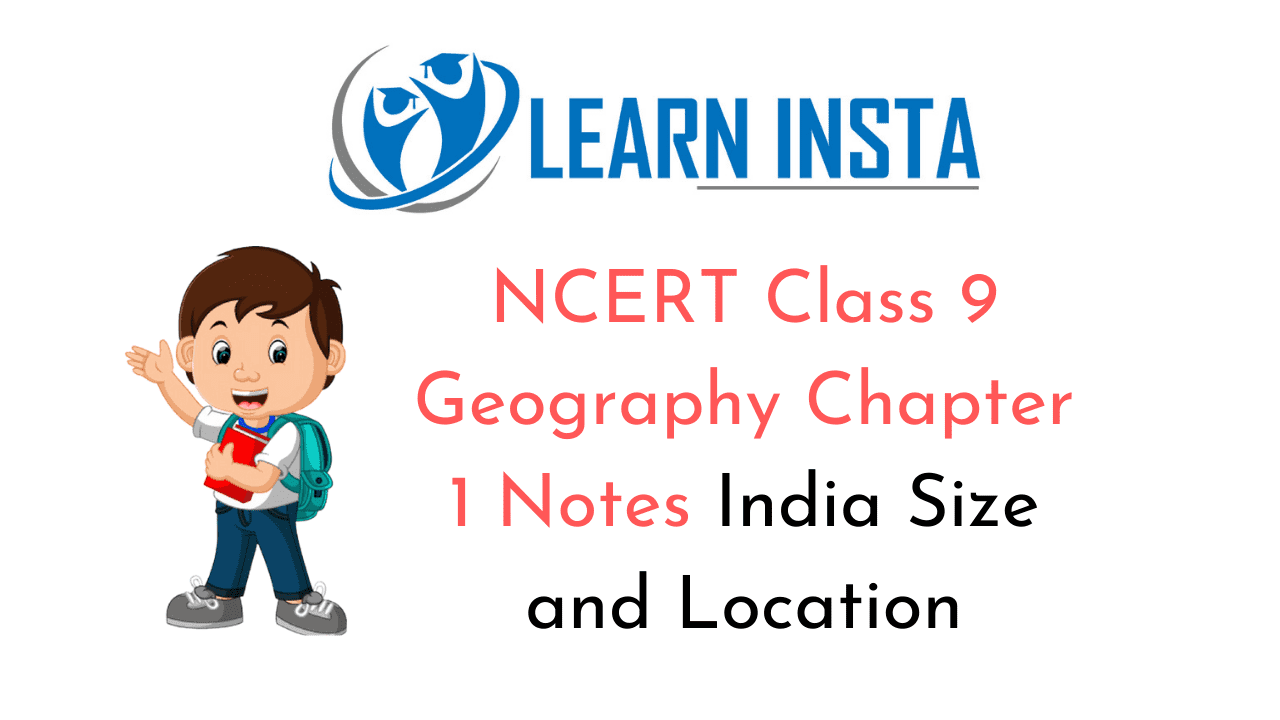
On this page, you will find NCERT Class 9 Geography Chapter 1 Notes Pdf free download. CBSE Class 9 Social Science Notes Geography Chapter 1 SST India Size and Location will seemingly, help them to revise the important concepts in less time. India Size and Location
India Size and Location Class 9 Notes Social Science Geography Chapter 1
CBSE Class 9 Geography Chapter 1 Notes Understanding the Lesson
1. India lies entirely in the Northern Hemisphere. The mainland extends between latitudes 8°4′ N and 37°6′ N and longitudes 68°7′ E and 97°25′ E. The Tropic of Cancer divides the country in two halves. The landmass of India has an area of 3.28 million square km. India’s total area accounts for about 2.4 percent of the total geographical area of the world.
2.India has a land boundary of about 15,200 km and the total length of the coastline of the mainland including Andaman and Nicobar and Lakshadweep is 7,516.65 km.
3. The Indian landmass has a central location between the East and West Asia. India is a southward extension of the Asian continent.
4. India occupies an important strategic position in South Asia. India has 29 states and 7 Union Territories. The neighbouring countries of India are-Pakistan, Afghanistan, China, Nepal, Bhutan, Myanmar, Bangladesh, Sri Lanka and Maldives.
5. India has had strong geographical and historical links with her neighbours.
India Size and Location Class 9 CBSE Notes Important Terms
Longitude: It refers to the imaginary lines that bisect the globe through the North and South Poles the ones that run vertically, as opposed to the lines of latitude that run horizontally, parallel to the equator.
Latitude: The angular distance east or west on the earth’s surface, measured by the angle contained between the meridian of a particular place and some prime meridian, as that of Greenwich, England, and usually expressed in degrees.
Equator: The imaginary great circle around the earth’s surface equidistant from the poles and perpendicular to the earth’s axis of rotation. It divides the earth into the Northern Hemisphere and the Southern Hemisphere.
Mainland: A large continuous extent of land that includes the greater part of a country or territory, as opposed to offshore islands and detached territories.
Coastline: The land along a coast. A line that forms the boundary between the land and the ocean, or a lake.
Pass: A gap or break in high, rugged terrain such as a mountain ridge.
Merchandise: Goods to be bought and sold.